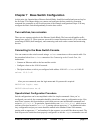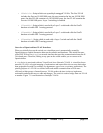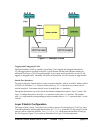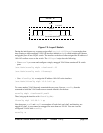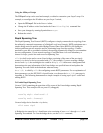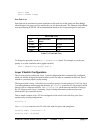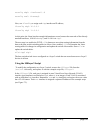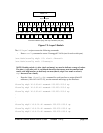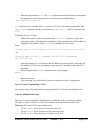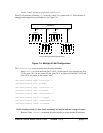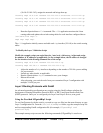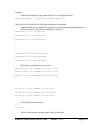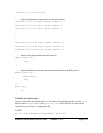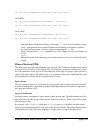
zconfig zhp1: vlan2=zre5..8
zconfig zre5..8=untag2
Now, use ifconfig to assign each zhp interface an IP address,
ifconfig zhp0 10.0.0.1
ifconfig zhp1 11.0.0.1
At this point, the Linux host has enough information to route between the networks of the directly
attached interfaces, 10.0.0.0 via zhp0, and 11.0.0.0 via zhp1.
The next step is to enable the ZNYX zl3d daemon to move that routing information from the
host to the base switch switching tables in silicon. Once enabled, zl3d will monitor the Linux
routing tables for changes in configuration and update the switch silicon tables. Start zl3d to
update the switch tables:
zl3d zhp0 zhp1
The base switch switch is now configured as a Layer3 switch that can route between two Layer2
devices in silicon.
Using the S50layer3 Script
To modify the configuration to a Layer 3 switch, remove the
S50layer2
file from the
/etc/rcZ.d
directory, and replace it with the example script file,
S50layer3
.
In the
S50layer3
file, each port is assigned its own Virtual Local Area Network (VLAN)
interface (port interfaces are labeled as
zhpN
, where
N
is an integer). Each VLAN is associated
with an individual
zhp
interface. Remember, zre and
zhp
interfaces can begin with a zero value
but a VLAN cannot. Each zre interface is assigned a separate IP address in the example script
(see Figure 7.3).
Ethernet Switch Blade User's Guide release 3.2.2j page 98




